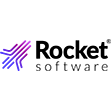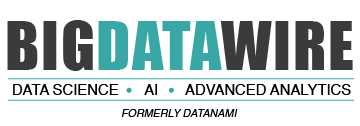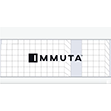
Rethinking AI-Ready Data with Semantic Layers

(BEST-BACKGROUNDS/Shutterstock)
The narrative that “data modeling is dead” has gained momentum in recent years. The rise of AI, especially large language models (LLMs), seems to demand wide, denormalized datasets that are fast to produce and easy to ingest. This has fueled the popularity of the “One Big Table” (OBT) approach–flattening everything into a single, wide dataset.
The appeal is obvious: fewer joins, faster prototypes, and reduced complexity. But beneath that surface lies a brittle foundation. OBTs sacrifice structure, context, and meaning. They may work for narrow use cases but falter under the weight of scale, governance, and reuse. Without consistent metadata or shared business logic, they become a liability.
The issue isn’t just OBT itself–it’s the mindset that data modeling is optional. But modeling isn’t obsolete; it’s evolving. The semantic layer is the mechanism that brings modern modeling practices to life in the age of AI and data democratization.
Not Just Big Table vs. Semantic Layer
This isn’t merely a battle between OBTs and semantic layers. The deeper message is this: semantic layers represent the right approach to data modeling and consumption in modern ecosystems. Rather than rejecting traditional models, the semantic layer extends and respects them – offering a shared, accessible language between data producers and consumers.
Semantic layers retain the discipline of modeling and enhance it with contextual meaning. They prevent teams from relying on fragile, ad hoc shortcuts and offer a scalable way to make data useful, trustworthy, and reusable.
Why One Big Table Falls Short
To understand the limitations of OBT, consider how it stacks up against real-world enterprise needs:
- Lacks scalability: OBTs are challenging to maintain as data evolves or scales.
- No shared definitions: Without consistent semantic context, “revenue” or “customer” can mean different things to different teams.
- Weak governance: Flattened data erases relationships critical for data lineage, auditability, and compliance.
- AI friction: AI systems may read OBTs without semantic guidance but might understand them wrong. The result? Misinterpretations, wrong assumptions, and failed queries.
OBTs might work in early prototypes, but something more structured is required for sustainable, trustworthy insights.
What Semantic Layers Actually Do
A semantic layer is a logical, reusable interface that translates raw data into meaningful business definitions. It serves as a contract between producers and consumers, enabling everyone–engineers, analysts, and AI agents–to speak the same data language.
Instead of duplicating metric logic across every dashboard or query, a semantic layer lets teams define concepts like “customer lifetime value,” “monthly revenue,” or “active users” once and access them consistently.
This enables:
- Clarity across tools: One metric definition is used across SQL, dashboards, notebooks, or AI chat.
- Data contracts: Shared, versioned logic that supports governance and trust.
- Faster onboarding: New users can quickly understand the data without tribal knowledge.
The semantic layer doesn’t replace data models – it builds on them. It creates accessible, composable surfaces for everyone, including non-technical users and machines.
A Richer Language for Data Understanding
Where OBTs simply present columns, semantic layers express what those columns mean:
- Is this a fact or a dimension?
- If a fact, should it be summed, counted, or aggregated in another way?
- Does a dimension apply at all levels of granularity or only within specific contexts?
This level of context is a game-changer. It allows business users and analysts to:
- Build dashboards without reverse-engineering logic.
- Rely on tooling that supports semantic standards to auto-generate reports.
- Avoid repeated reinvention of metric calculations.
It makes data intuitive to explore – without requiring a deep dive into SQL or BI config.
Enabler of Data as a Product
The semantic layer is foundational to the concept of data as a product. Instead of delivering brittle dashboards or raw datasets, data teams can produce clean, reusable, documented data products.
These data products have built-in meaning. Business logic is embedded, not hidden, in siloed documentation, significantly reducing friction in adoption and cross-team collaboration.
Semantic layers serve as the connective tissue in modern architectures like data mesh, where decentralized ownership and self-service are guiding principles. They allow individual teams to publish well-defined data products while ensuring interoperability and consistency across the organization.
Why AI Performs Better with Semantic Layers
There’s a misconception that AI simply wants “more data.” In reality, AI thrives on contextualized, well-structured data. LLMs can technically parse flat tables, but without guidance, they misinterpret metrics or infer invalid logic.
A semantic layer gives AI the scaffolding it needs:
- Clear relationships between measures and dimensions
- Business logic definitions (e.g., how to calculate churn)
- Metadata annotations for query validation or clarification
This improves natural language interfaces, boosts AI accuracy, and reduces reliance on prompt engineering. Semantic layers are thus AI enablers, turning raw inputs into reliable, explainable outcomes.
More Than AI: Enabling True Data Democratization
While semantic layers improve AI readiness, their value is broader:
- Empower business users: Explore data in natural terms without SQL.
- Accelerate delivery: Analysts no longer rebuild logic from scratch.
- Improve compliance: Auditors can trace metrics to definitions.
- Support data products: Teams deliver maintainable, ready-to-use datasets.
This shift from dashboards to well-defined, reusable data artifacts is a cornerstone of modern data strategy. It transforms data work from isolated projects into a productized, scalable discipline.
Semantic Layer ≠ Data Catalog: Complementary, Not Interchangeable
It’s easy to confuse data catalogs with semantic layers, but they serve very different purposes in the data stack.
| Function | Data Catalog | Semantic Layer |
| Primary Role | Discovery and documentation | Definition and operational logic |
| Focus | Metadata, lineage, ownership | Metrics, relationships, usage context |
| Audience | Data stewards, IT, compliance | Analysts, engineers, AI systems, business users |
| Actionability | Describes what exists | Defines how data should be used |
Think of catalogs as the library index – they tell you what data is available and where it came from. Semantic layers, meanwhile, are the instruction manual – they explain how to use that data effectively.
While the two should ideally be integrated, the semantic layer is the more actionable foundation if your immediate goal is to enable AI, self-service, and trusted insights.
Evolving Modeling, Not Abandoning It
There’s pressure today to “flatten everything” to simplify models for speed. However, this pressure should not be confused with the need to abandon modeling. Instead, we must evolve it. The semantic layer represents that evolution:
- It retains the rigor of traditional data modeling
- It adds accessibility for non-technical users.
- It embeds meaning for AI and automation.
Organizations that invest in semantic clarity today will be better equipped to navigate tomorrow’s complexity – scaling data products, building AI solutions, or governing distributed architectures.
How to Get Started
You don’t need to overhaul your entire data platform to begin. Start by asking:
- What metrics are most reused – and most inconsistently defined?
- What questions do analysts get asked repeatedly?
- What data do you already trust but struggle to explain?
Then:
- Map out key business concepts
- Define core metrics in a shared semantic model.
- Pilot in one analytics or AI tool
- Treat the semantic layer as a living asset – governed, maintained, and versioned.
Above all, don’t outsource meaning to metadata or hope AI will “figure it out.” Define it. Publish it. Use it.
Modern data platforms and semantic layer tools now offer AI-assisted features to help generate initial versions of semantic models. While these outputs aren’t production-ready, they can significantly reduce manual effort during early development. These tools also support the continuous evolution of data products by detecting and notifying teams of structural changes.
We’ve seen firsthand how the absence of a semantic layer leads to fragile dashboards, siloed logic, and repeated effort. But we’ve also seen how a well-implemented semantic layer unlocks data as a product, accelerates insight generation, and improves collaboration across business and technical teams. Because the future isn’t flat–it’s modeled, meaningful, and machine-ready.
About the author: Alexey Smirnov is a Solution Data Architect at DataArt with over 18 years of experience, specializing in modern cloud data platforms, scalable data architecture, data modeling evangelist.
specializing in modern cloud data platforms, scalable data architecture, data modeling evangelist.
Related Items:
Is the Universal Semantic Layer the Next Big Data Battleground?
Why a Universal Semantic Layer is the Key to Unlock Value from Your Data
The Semantic Layer Architecture: Where Business Intelligence is Truly Heading































